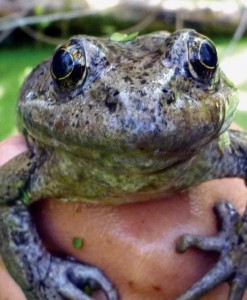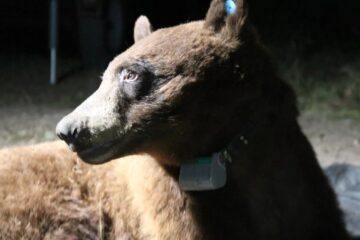Rare frogs survive first year
At least a handful of rare frogs have survived their first year in the Santa Monica Mountains due to an effort by the National Park Service to expand the range of the California red-legged frog in Southern California.
Source of this article: The Thousand Oaks Acorn, June 18, 2015
Most studies have found that only 1 to 5 percent of frogs in the wild make it to adulthood, so this is not a given,” said Katy Delaney, NPS wildlife ecologist.

YOU CAN GO HOME AGAIN—Red-legged frogs were reintroduced to the Santa Monica Mountains last spring. Courtesy of the National Park Service
“They’re basically teenagers now since it takes them two years to reach adulthood. And they’re the first California red-legged frogs to grow up in the Santa Monica Mountains since the early 1970s,” Delaney said.
In spring of 2104 the park service transferred nearly 1,000 eggs from an isolated population source north of the 101 Freeway in the Simi Hills to two undisclosed stream locations in the Santa Monica Mountains.
Mesh holding pens protected the eggs from predators as they developed into tadpoles. After a few months of feeding the tadpoles algae, pellets and organic lettuce, Delaney and her team released the juvenile frogs last July.
The exact number of frogs is impossible to predict because at this point biologists are relying simply on visual detection during daytime surveys, though they plan to individually mark the animals in the future, the park service said.
Biologists hope that enough frogs will survive to adulthood to begin breeding in the spring of 2016. A second group of more than
1,000 tadpoles, transferred as eggs from the source population a few months ago, were released just recently.
The California red-legged frog is named for the reddish coloring on its legs and belly.
In addition to the National Park Service, the project team includes California State Parks, the Mountains Recreation and Conservation Authority, the Santa Barbara Zoo, the Santa Monica Bay Restoration Commission, the U.S. Fish and Wildlife Service and U.S. Geological Survey’s Western Ecological Research Center.



0 Comments